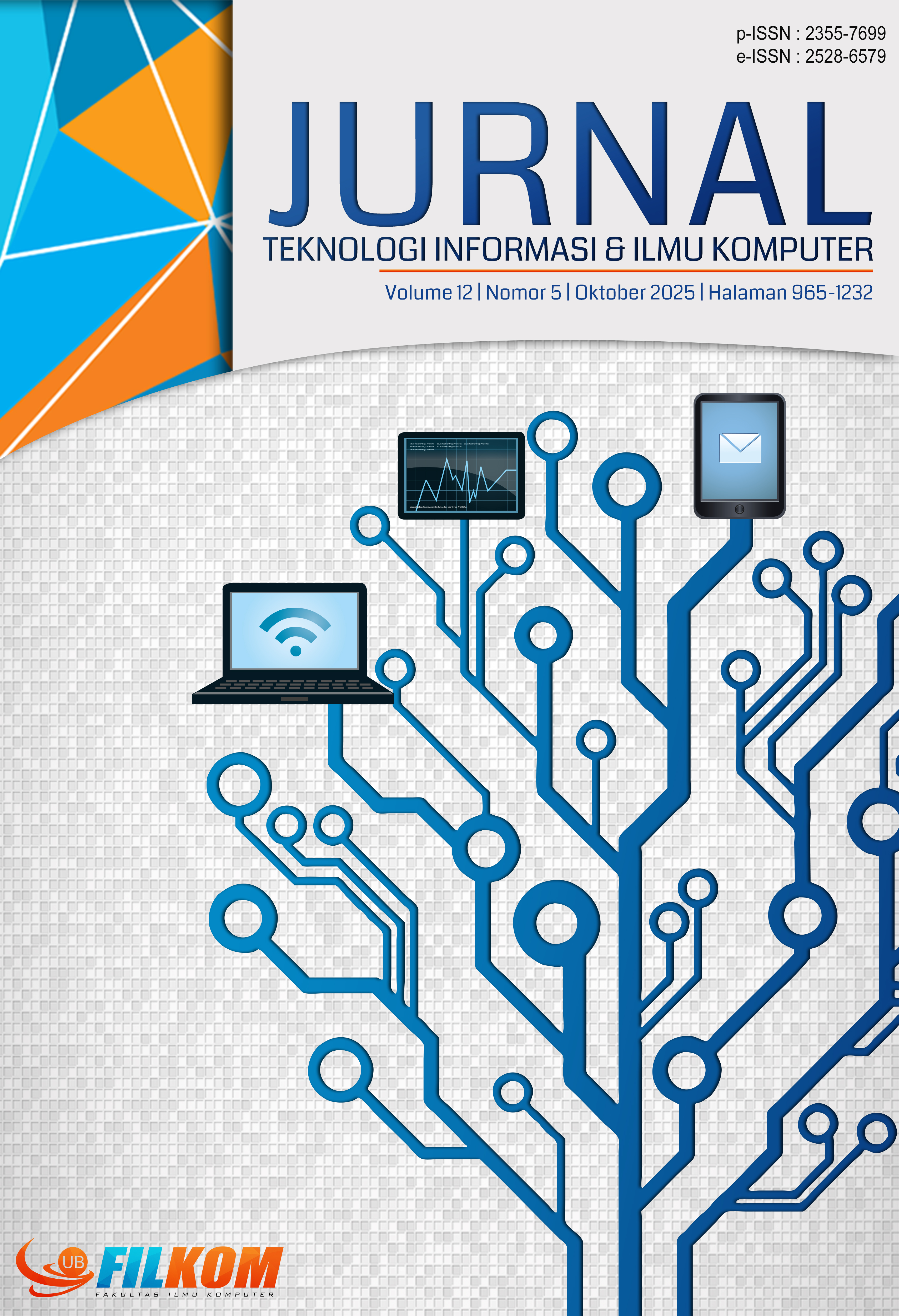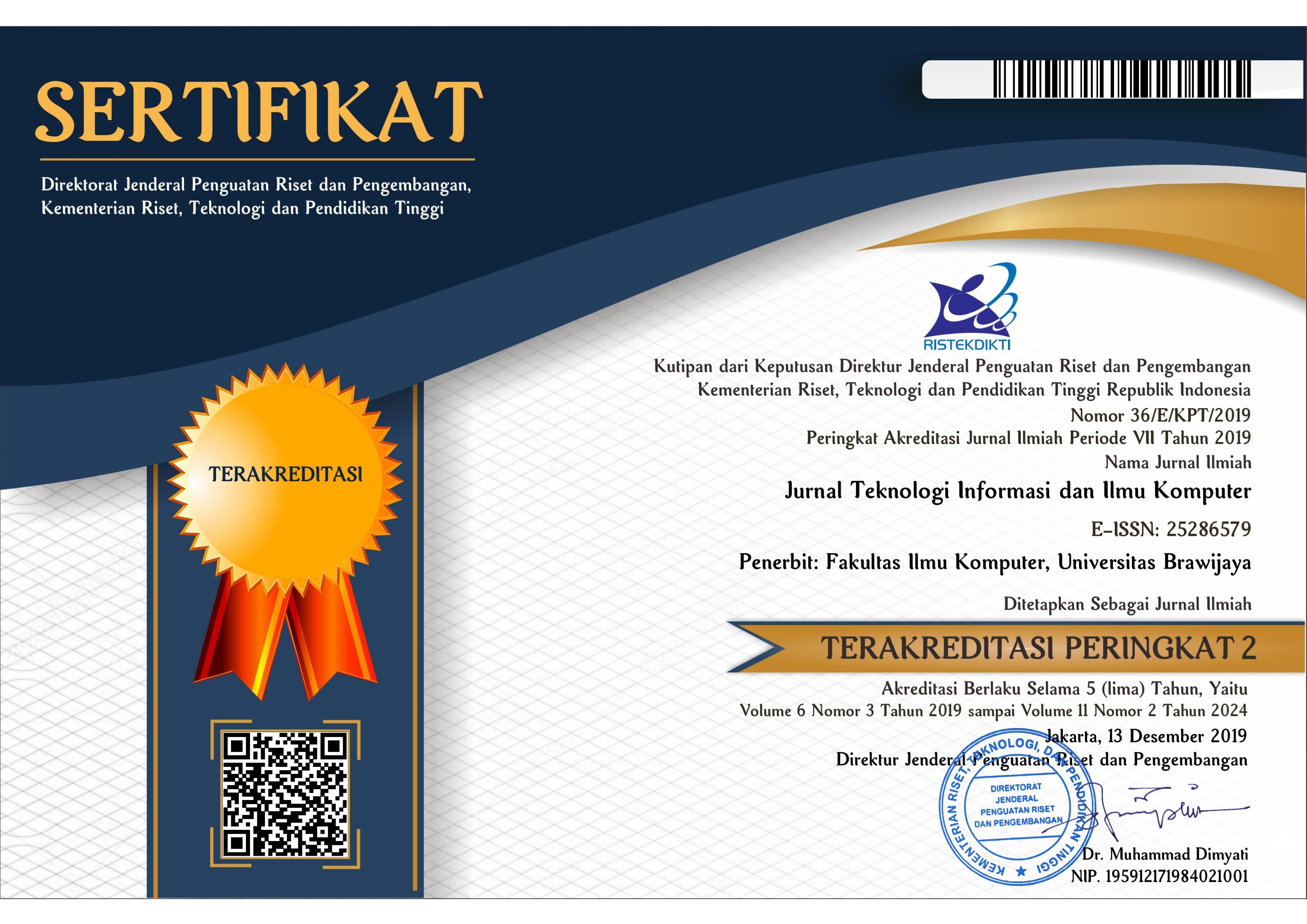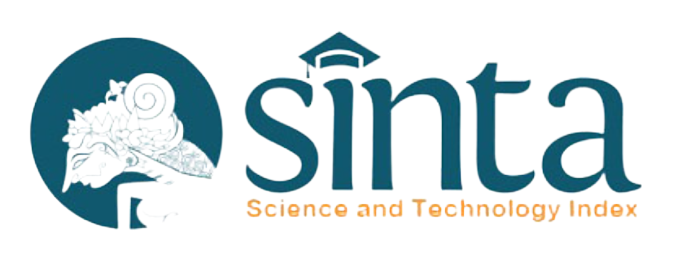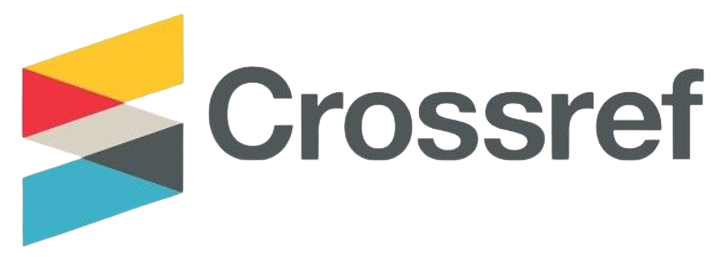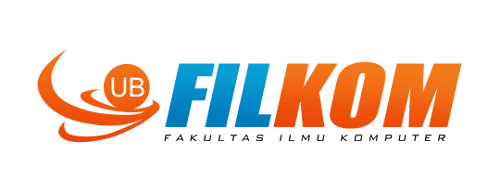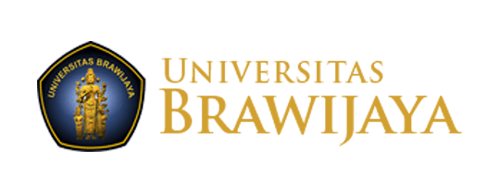Faktor yang Memengaruhi Penggunaan Platform Merdeka Mengajar Terhadap Peningkatan Kompetensi Guru SMP di Kabupaten Ponorogo
DOI:
https://doi.org/10.25126/jtiik.2025125Kata Kunci:
convenience from online access, PLS-SEM, Platform Merdeka Mengajar, resistance to change, UTAUT2Abstrak
Kurikulum Merdeka yang diluncurkan pada 2022 didukung oleh Platform Merdeka Mengajar untuk membantu guru memahami kurikulum secara mandiri dan meningkatkan kompetensi. Namun, implementasinya di Kabupaten Ponorogo, terutama di Sekolah Penggerak jenjang SMP, menghadapi kendala seperti keterbatasan waktu, hambatan teknologi, dan rendahnya pemanfaatan fitur. Penelitian ini menganalisis faktor-faktor yang memengaruhi penerimaan dan penggunaan platform tersebut dengan pendekatan kuantitatif melalui kuesioner kepada 164 guru SMP Sekolah Penggerak di Kabupaten Ponorogo. Model UTAUT2 diterapkan dengan tambahan variabel convenience from online access dan resistance to change serta moderasi. Hasil analisis data menggunakan PLS-SEM dengan alat bantu SmartPLS menyatakan bahwa habit (β=0.511, p=0.000), hedonic motivation (β=0.302, p=0.008), dan convenience from online access (β=0.177, p=0.018) berpengaruh signifikan terhadap behavioral intention, sementara behavioral intention (β=0.401, p=0.000) dan habit (β=0.236, p=0.029) berpengaruh signifikan terhadap use behavior. Hasil analisis moderasi menunjukkan bahwa jenis kelamin memperlemah (β=-0.258, p=0.008) hedonic motivation dengan behavioral intention dan memperkuat (β=0.240, p=0.001) habit dengan behavioral intention. Sementara itu, pengalaman memperlemah (β=-0.202, p=0.006) habit dengan use behavior. Penelitian ini merekomendasikan optimalisasi platform untuk mendukung kompetensi guru dan keberhasilan Kurikulum Merdeka.
Abstract
The Merdeka Curriculum, launched in 2022, is supported by the Merdeka Mengajar Platform to help teachers independently understand the curriculum and enhance their competencies. However, its implementation in Ponorogo Regency, especially in Pioneer Schools at the junior high school level, faces challenges such as time constraints, technological barriers, and low feature utilization. This study analyzes factors influencing the acceptance and use of the platform through a quantitative approach, using questionnaires distributed to 164 junior high school teachers in Pioneer Schools in Ponorogo Regency. The UTAUT2 model was applied with additional variables: convenience from online access and resistance to change, along with moderation analysis. Data analysis using PLS-SEM with SmartPLS revealed that habit (β=0.511, p=0.000), hedonic motivation (β=0.302, p=0.008), and convenience from online access (β=0.177, p=0.018) significantly influence behavioral intention, while behavioral intention (β=0.401, p=0.000) and habit (β=0.236, p=0.029) significantly influence use behavior. Moderation analysis showed that gender weakens (β=-0.258, p=0.008) the relationship between hedonic motivation and behavioral intention, while strengthening (β=0.240, p=0.001) the relationship between habit and behavioral intention. Meanwhile, experience weakens (β=-0.202, p=0.006) the relationship between habit and use behavior. This study recommends optimizing the platform to support teacher competencies and ensure the success of the Merdeka Curriculum.
Downloads
Referensi
AJZEN, I., 1991. The theory of planned behavior. Organizational Behavior and Human Decision Processes, [online] 50(2), pp.179–211. https://doi.org/10.1016/0749-5978(91)90020-T.
AVCI, S., 2022. Examining the factors affecting teachers’ use of digital learning resources with UTAUT2. Malaysian Online Journal of Educational Technology, 10(3), pp.200–214. https://doi.org/10.52380/mojet.2022.10.3.399.
CASTAÑO-MUÑOZ, J., DUART, J.M. AND SANCHO-VINUESA, T., 2014. The Internet in face-to-face higher education: Can interactive learning improve academic achievement? British Journal of Educational Technology, 45(1), pp.149–159. https://doi.org/10.1111/bjet.12007.
CHAUHAN, S. AND JAISWAL, M., 2016. Determinants of acceptance of ERP software training in business schools: Empirical investigation using UTAUT model. International Journal of Management Education, 14(3), pp.248–262. https://doi.org/10.1016/j.ijme.2016.05.005.
COMPEAU, D., HIGGINS, C.A. AND HUFF, S., 1999. Social cognitive theory and individual reactions to computing technology: A longitudinal study. MIS Quarterly: Management Information Systems, 23(2), pp.145–158. https://doi.org/10.2307/249749.
DAVIS, F.D., 1989. Perceived usefulness, perceived ease of use, and user acceptance of information technology. MIS Quarterly: Management Information Systems, 13(3), pp.319–339. https://doi.org/10.2307/249008.
DAVIS, F.D., BAGOZZI, R.P. AND WARSHAW, P.R., 1989. Davis1989 (1).Pdf. Management Science, 35(July 2018), pp.982–1003.
DAVIS, F.D., BAGOZZI, R.P. AND WARSHAW, P.R., 1992. Extrinsic and Intrinsic Motivation to Use Computers in the Workplace. Journal of Applied Social Psychology, 22(14), pp.1111–1132. https://doi.org/10.1111/j.1559-1816.1992.tb00945.x.
GHOZALI, I., 2006. Structural Equation Model (SmartPLS). Encyclopedia of Biopharmaceutical Statistics. Badan Penerbit Universitas Diponegoro. https://doi.org/10.3109/9781439822463.209.
GHOZALI, I., 2016. Aplikasi Analisis Multivariete Dengan Program IBM SPSS 23. Semarang: Badan Penerbit Universitas Diponegoro.
GUO, X., SUN, Y., WANG, N., PENG, Z. AND YAN, Z., 2013. The dark side of elderly acceptance of preventive mobile health services in China. Electronic Markets, 23(1), pp.49–61. https://doi.org/10.1007/s12525-012-0112-4.
HAIR, J.F., RISHER, J.J., SARSTEDT, M. AND RINGLE, C.M., 2019. The Results of PLS-SEM Article information. European Business Review, 31(1), pp.2–24.
HOQUE, R. AND SORWAR, G., 2017. Understanding factors influencing the adoption of mHealth by the elderly: An extension of the UTAUT model. International Journal of Medical Informatics, [online] 101(September 2015), pp.75–84. https://doi.org/10.1016/j.ijmedinf.2017.02.002.
KEMENDIKBUDRISTEK, 2022. Apa itu Platform Merdeka Mengajar? [online] Available at: <https://pusatinformasi.guru.kemdikbud.go.id/hc/id/articles/6090880411673-Apa-Itu-Platform-Merdeka-Mengajar> [Accessed 20 August 2024].
KEMENDIKBUDRISTEK, 2024. Sekolah Penggerak adalah Katalis untuk Mewujudkan Visi Pendidikan Indonesia. [online] Available at: <https://psp-web.pauddikdasmen.kemdikbud.go.id/#/home> [Accessed 20 August 2024].
MEYLIANA, WIDJAJA, H.A.E., SANTOSO, S.W., PETRUS, S., JOVIAN AND JESSICA, 2019. The Enhancement of Learning Management System in Teaching Learning Process with the UTAUT2 and Trust Model. Proceedings of 2019 International Conference on Information Management and Technology, ICIMTech 2019, 1, pp.309–313. https://doi.org/10.1109/ICIMTech.2019.8843828.
MEYLIANA, WIDJAJA, H.A.E., SANTOSO, S.W., SURJANDY, FERNANDO, E. AND CONDROBIMO, A.R., 2020. Improving the Quality of Learning Management System (LMS) based on Student Perspectives Using UTAUT2 and Trust Model. ICICoS 2020 - Proceeding: 4th International Conference on Informatics and Computational Sciences, pp.5–10. https://doi.org/10.1109/ICICoS51170.2020.9298985.
MOORE, G.C. AND BENBASAT, I., 1991. Development of an instrument to measure the perceptions of adopting an information technology innovation. Information Systems Research, 2(3), pp.192–222. https://doi.org/10.1287/isre.2.3.192.
PURBA, R., 2022. Manfaat Luar Biasa Platform Merdeka Mengajar Jika Digunakan Sebagai Media Pembelajaran.
R. KHIRTINA HENNY AND TRILOKA, J., 2023. Kajian Analisis Persepsi Penerimaan Platform Merdeka Mengajar (PMM) Pada Guru SMP Negeri Di Kota Metro Dengan Menggunakan Technology Acceptance Model (TAM). Seminar Nasional Hasil Penelitian dan Pengabdian Masyarakat , (2002), pp.251–258.
SARSTEDT, M., RINGLE, C.M. AND HAIR, J.F., 2021. Partial Least Squares Structural Equation Modeling. In: Handbook of Market Research. [online] Cham: Springer International Publishing. pp.1–47. https://doi.org/10.1007/978-3-319-05542-8_15-2.
SMITHER, J.A.A. AND BRAUN, C.C., 1994. Technology and older adults: Factors affecting the adoption of automatic teller machines. Journal of General Psychology, 121(4), pp.381–389. https://doi.org/10.1080/00221309.1994.9921212.
SUGIYONO, 2013. Metodologi Penelitian Kuantitatif, Kualitatif dan R & D.
THOMPSON, R.L., HIGGINS, C.A. AND HOWELL, J.M., 1991. Personal Computing: Toward a Conceptual Model of Utilization Utilization of Personal Computers Personal Computing: Toward a Conceptual Model of Utilization1. Source: MIS Quarterly, 15(1), pp.125–143.
VENKATESH, V., MORRIS, M.G., DAVIS, G.B. AND DAVIS, F.D., 2003. User Acceptance of Information: Towar a Unified View. MIS Quarterly, [online] 27(3), pp.425–478. Available at: <https://www.jstor.org/stable/30036540>.
VENKATESH, V., THONG, J.Y.L. AND XIN XU, 2012. C onsumer SEBUAH CCEPTANCE DAN U SE OF saya NFORMASI T echnology : E XTENDING THE U NIFIED T HEORY. MIS Quarterly, 36(1), pp.157–178.
WAYCOTT, J., BENNETT, S., KENNEDY, G., DALGARNO, B. AND GRAY, K., 2010. Digital divides? Student and staff perceptions of information and communication technologies. Computers and Education, [online] 54(4), pp.1202–1211. https://doi.org/10.1016/j.compedu.2009.11.006.
Unduhan
Diterbitkan
Terbitan
Bagian
Lisensi
Hak Cipta (c) 2025 Jurnal Teknologi Informasi dan Ilmu Komputer

Artikel ini berlisensiCreative Commons Attribution-ShareAlike 4.0 International License.

Artikel ini berlisensi Creative Common Attribution-ShareAlike 4.0 International (CC BY-SA 4.0)
Penulis yang menerbitkan di jurnal ini menyetujui ketentuan berikut:
- Penulis menyimpan hak cipta dan memberikan jurnal hak penerbitan pertama naskah secara simultan dengan lisensi di bawah Creative Common Attribution-ShareAlike 4.0 International (CC BY-SA 4.0) yang mengizinkan orang lain untuk berbagi pekerjaan dengan sebuah pernyataan kepenulisan pekerjaan dan penerbitan awal di jurnal ini.
- Penulis bisa memasukkan ke dalam penyusunan kontraktual tambahan terpisah untuk distribusi non ekslusif versi kaya terbitan jurnal (contoh: mempostingnya ke repositori institusional atau menerbitkannya dalam sebuah buku), dengan pengakuan penerbitan awalnya di jurnal ini.
- Penulis diizinkan dan didorong untuk mem-posting karya mereka online (contoh: di repositori institusional atau di website mereka) sebelum dan selama proses penyerahan, karena dapat mengarahkan ke pertukaran produktif, seperti halnya sitiran yang lebih awal dan lebih hebat dari karya yang diterbitkan. (Lihat Efek Akses Terbuka).

